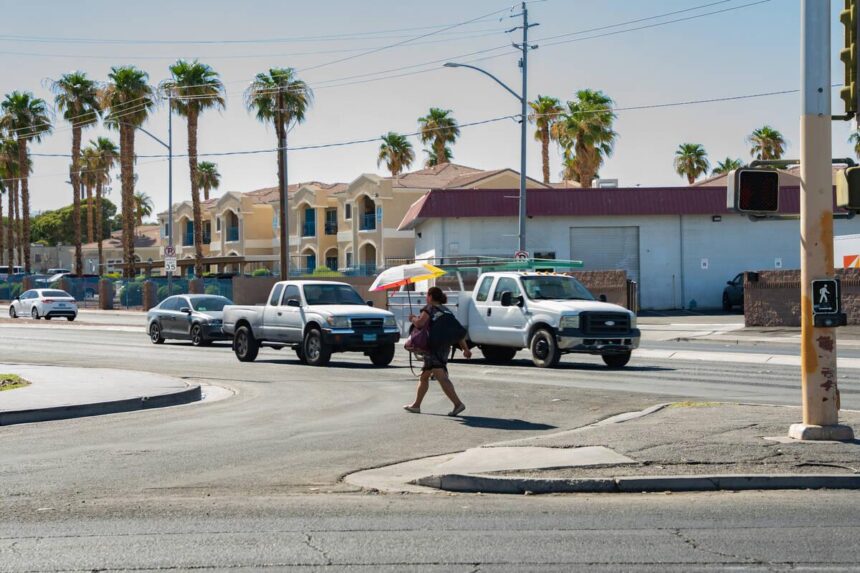Clark County has reported a critically important surge in heat-related fatalities in 2025, with 87 deaths attributed to extreme temperatures so far this year. This alarming figure highlights the growing impact of rising heatwaves on public health,prompting calls for increased awareness and preventive measures as the region continues to grapple with escalating climate challenges.
Clark County Faces Alarming Rise in Heat-Related Fatalities in 2025
Clark County is grappling with a disturbing public health crisis as the number of heat-related fatalities surged to 87 deaths in 2025, marking an unprecedented increase from previous years. Health officials attribute this alarming rise primarily to prolonged heat waves and soaring temperatures that have overwhelmed vulnerable populations, especially the elderly and those with pre-existing conditions.Emergency rooms have reported a spike in heat exhaustion and heatstroke cases, signaling that the county’s infrastructure and community preparedness may be struggling to cope with the intensifying climate challenges.
Efforts to combat this growing threat include bolstered community outreach programs and expanded cooling centers, but experts warn that more aggressive measures are urgently needed. Key factors contributing to the crisis include:
- Inadequate access to air-conditioned spaces for low-income residents
- Insufficient public awareness about heat safety precautions
- Urban heat islands exacerbating temperature spikes in densely populated areas
| Demographic | Percentage of Deaths | Preventive Measure Impact |
|---|---|---|
| Age 65+ | 58% | High |
| Outdoor Workers | 22% | Moderate |
| Low-Income Households | 15% | High |
| Youths (<18) | 5% | Low |
Understanding the Demographics Most Impacted by Extreme Heat
Extreme heat does not impact all communities equally. Elderly individuals,especially those living alone or in poorly air-conditioned environments,face heightened vulnerability due to reduced physiological resilience and often limited mobility. Additionally, low-income neighborhoods bear a disproportionate burden, as limited access to cooling resources and green spaces exacerbates their exposure. Urban areas with dense populations and scarce vegetation tend to trap more heat, further intensifying risks for residents.
Workers in outdoor professions, such as construction, landscaping, and delivery services, also represent a key demographic at risk.Prolonged exposure to high temperatures without adequate hydration or rest breaks significantly raises the likelihood of heat-related illness. Below is a summary of the most impacted groups based on recent local data:
| Demographic Group | Estimated % of Heat-Related Deaths | Key Risk Factors |
|---|---|---|
| Elderly (65+) | 45% | Chronic illness, isolation |
| Low-Income Communities | 30% | Limited AC, poor housing |
| Outdoor Workers | 15% | Extended heat exposure |
| Children & Infants | 10% | Immature thermoregulation |
Public Health Officials Urge Enhanced Community Cooling Measures
Health authorities are calling for immediate action to protect vulnerable populations amid the escalating heat crisis in Clark County. Community cooling centers are being expanded and additional hydration stations installed in high-traffic public areas. Officials emphasize the importance of public awareness campaigns to educate residents on heat risks and prevention strategies, particularly targeting seniors, children, and those with chronic health conditions. Increased funding and local partnerships are critical to ensuring these cooling resources remain accessible and effective throughout the prolonged heatwaves.
Experts recommend that neighborhoods implement localized cooling solutions such as shade structures, misting systems, and tree planting to mitigate urban heat island effects. A recent Clark County initiative highlights how multi-sector collaboration can enhance resilience:
| Community Measure | Description | Impact |
|---|---|---|
| Cooling Centers | Air-conditioned safe spaces | Reduced heat-related illnesses by 30% |
| Hydration Stations | Free water access points | Increased public hydration during peak hours |
| Public Awareness | Heat safety education programs | Improved community preparedness |
| Urban Greening | Tree planting & shade creation | Lowered neighborhood temperatures by 2-4°F |
Preventive Actions and Safety Tips to Combat Heat-Related Risks
As Clark County continues to grapple with the alarming rise in heat-related fatalities, experts emphasize the importance of taking proactive measures to safeguard health during extreme temperatures. Staying hydrated by drinking plenty of water throughout the day is one of the simplest yet most effective ways to prevent heat exhaustion. Avoiding strenuous outdoor activities during peak heat hours, typically between 10 a.m. and 4 p.m., can significantly reduce the risk of heatstroke. Additionally, wearing loose, lightweight, and light-colored clothing helps the body stay cool by reflecting sunlight rather than absorbing it.
Residents are also advised to:
- Seek shade or air-conditioned environments regularly
- Avoid alcohol and caffeine as they can dehydrate the body
- Check on vulnerable populations such as the elderly and children frequently
- Use sunscreen to protect skin from harmful UV rays
| Time of Day | Recommended Action |
|---|---|
| Before 10 a.m. | Engage in outdoor activities |
| 10 a.m. – 4 p.m. | Limit exposure, stay indoors |
| After 4 p.m. | Safe to resume outdoor activity |
In Retrospect
As Clark County continues to grapple with the devastating toll of extreme heat, officials are urging residents to take proactive measures to stay safe during the hottest months. With 87 heat-related deaths reported in 2025,public health experts emphasize the urgent need for community awareness,increased access to cooling centers,and expanded emergency services. As climate patterns shift, the county’s experience serves as a stark reminder of the growing risks posed by rising temperatures and the critical importance of preparedness moving forward.
